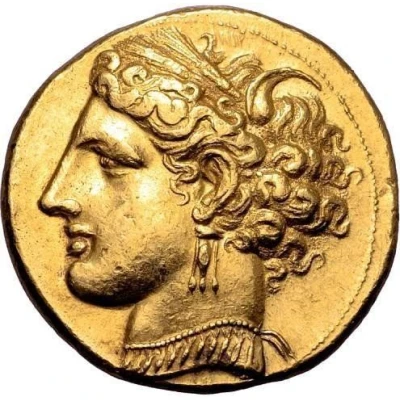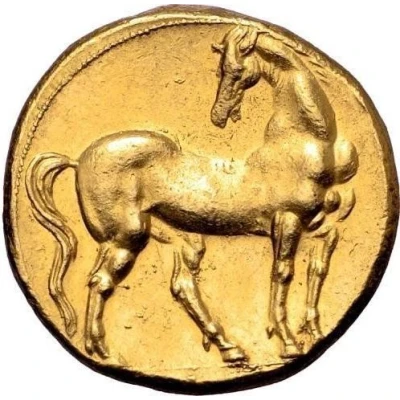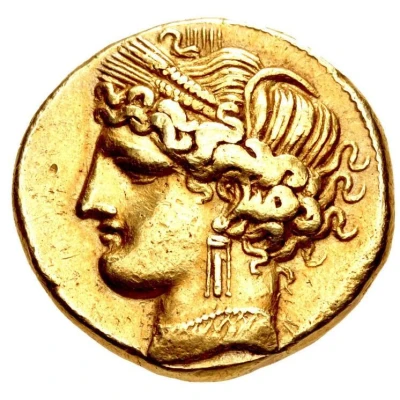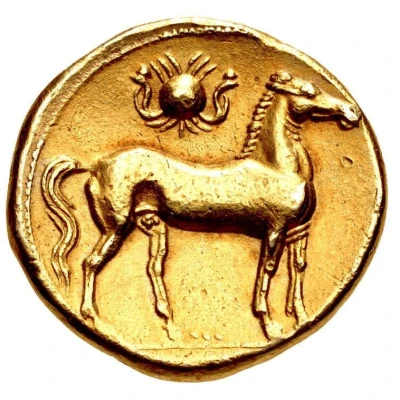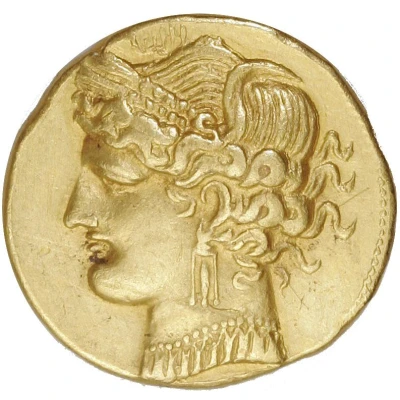
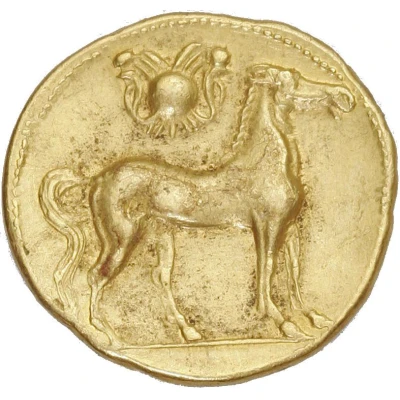

© Heritage Auctions
Trihemistater 264 BC - 241 BC
| Electrum (45-49% gold) | 10.78 g | 22 mm |
| Issuer | Carthage (Zeugitana) |
|---|---|
| Period | First Punic War (264 BC - 241 BC) |
| Type | Standard circulation coin |
| Years | 264 BC - 241 BC |
| Value | Gold Trihemistater (18) |
| Currency | Shekel |
| Composition | Electrum (45-49% gold) |
| Weight | 10.78 g |
| Diameter | 22 mm |
| Shape | Round (irregular) |
| Technique | Hammered |
| Demonetized | Yes |
| Updated | 2024-10-09 |
| Numista | N#324696 |
|---|---|
| Rarity index | 97% |
Reverse
Horse standing right; above, sun-disk between two uracus-cobras.
Interesting fact
The Trihemistater coin was used as a form of currency in the ancient city of Carthage, which was located in present-day Tunisia. The coin's name, "Trihemistater," means "three-and-a-half shekels" in Greek, which was the currency's value in the ancient Hebrew system. Despite being made of electrum, a naturally occurring alloy of gold and silver, the coin was not as valuable as pure gold coins of the time. However, it was still widely used for trade and commerce throughout the Mediterranean region.
